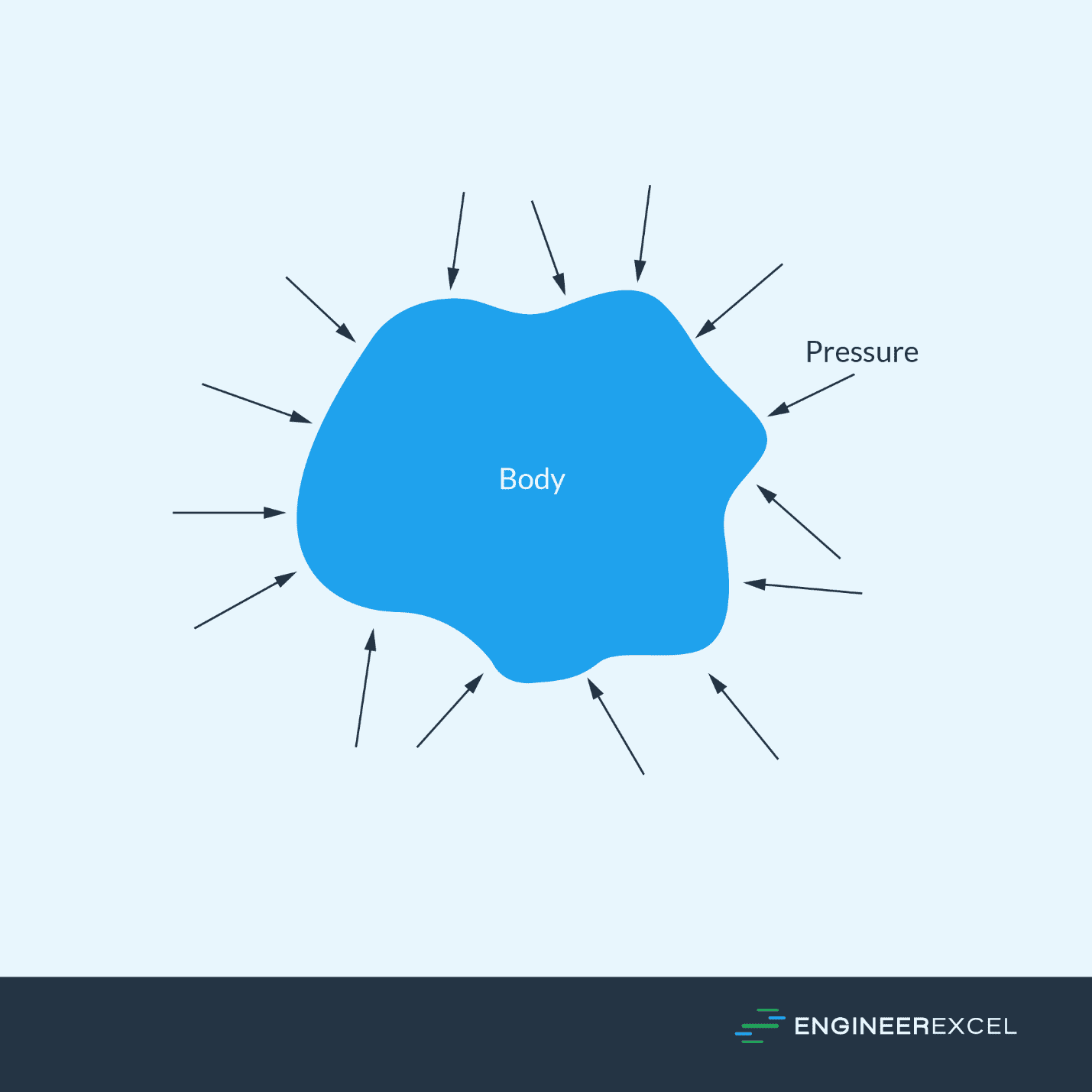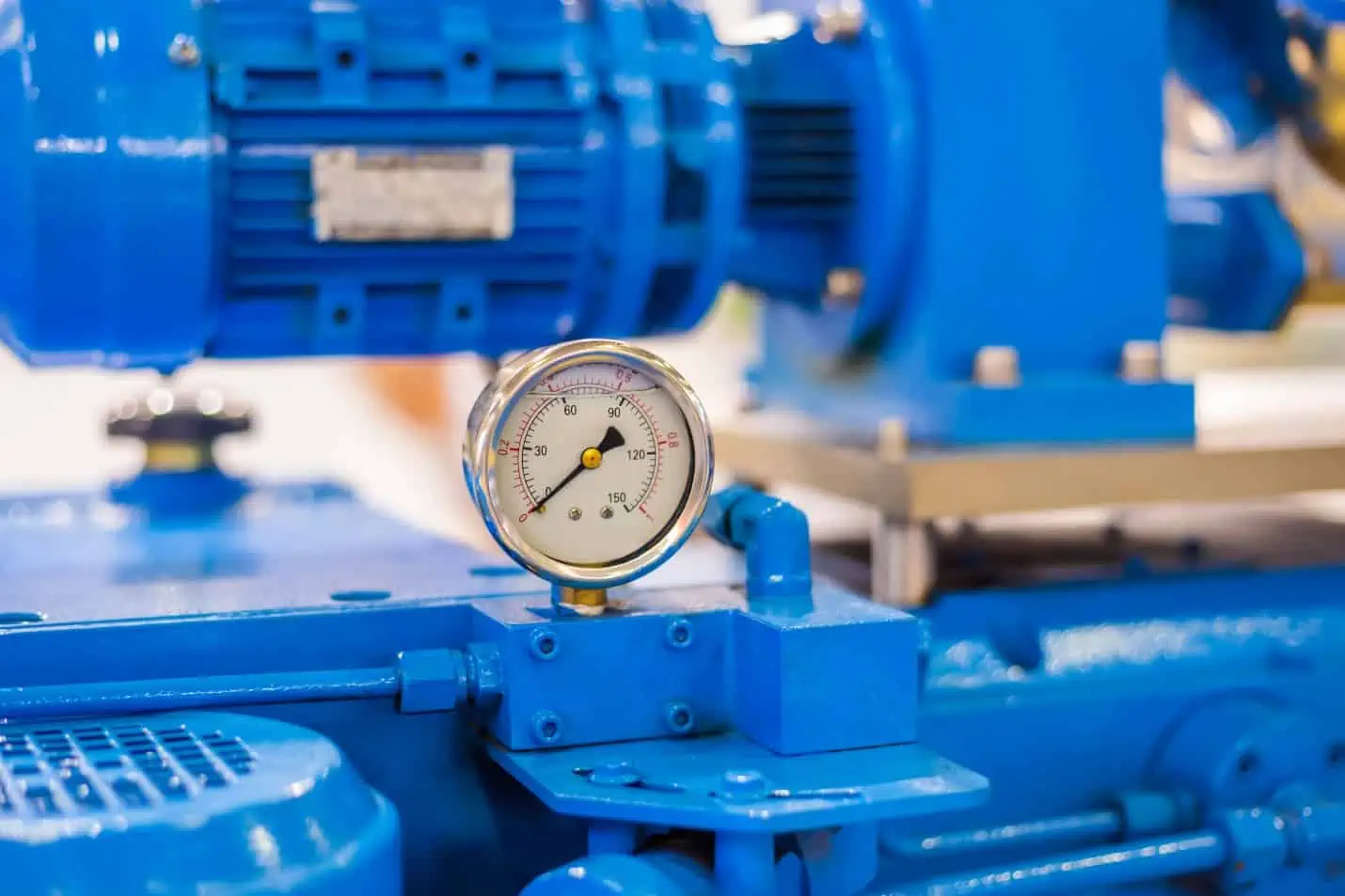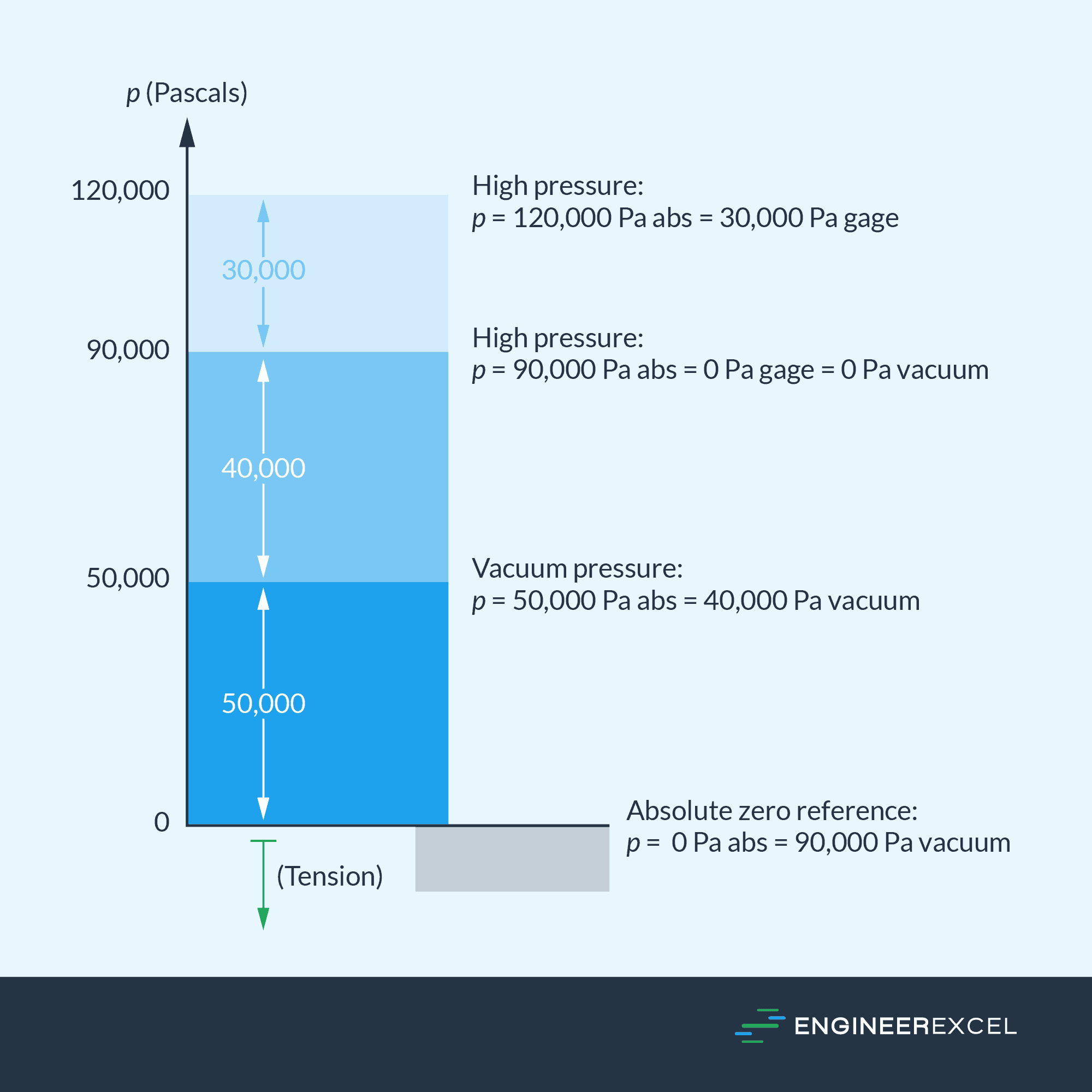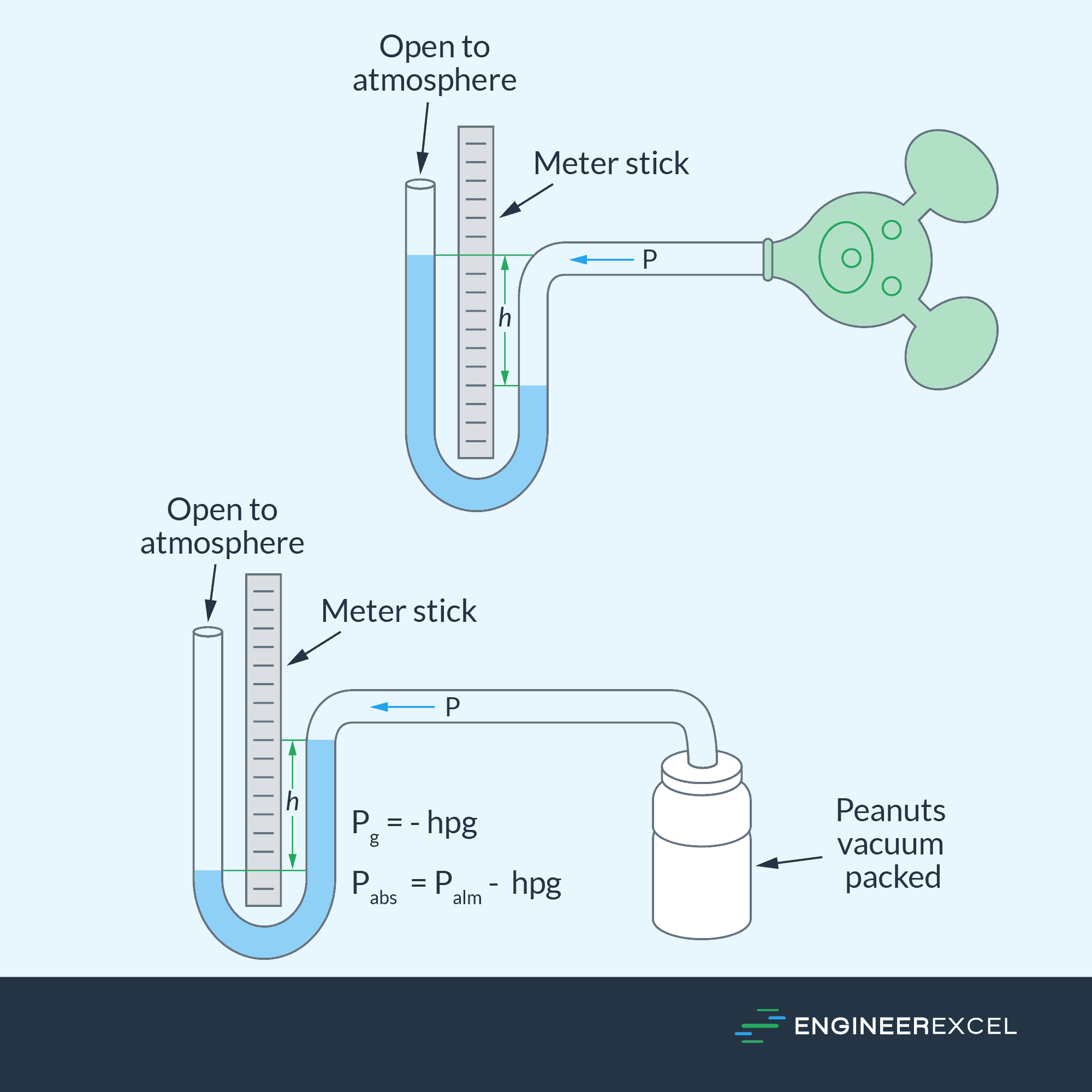Pressure is a scalar quantity that quantifies the magnitude of force applied perpendicular to a surface per unit area. In the field of fluid mechanics and engineering, pressure can be expressed in different ways depending on the reference point of measurement.

This article focuses on one type of pressure called the gauge pressure, including its applications, calculation, and methods of measurement.
What Is Gauge Pressure
Gauge pressure refers to the pressure measured relative to the atmospheric pressure.
In general, pressure is the result of the force exerted by a fluid, such as air or water, pressing upon a surface. This force is directed inward and perpendicular to the surface, as illustrated in the diagram below.

Elevate Your Engineering With Excel
Advance in Excel with engineering-focused training that equips you with the skills to streamline projects and accelerate your career.

In the Earth’s atmosphere, air exerts pressure due to the weight of the air molecules above it. The higher the altitude, the lower the atmospheric pressure because there is less air above.
Gauge pressure is measured with reference to this atmospheric pressure.
At sea level, the typical atmospheric pressure is measured at 101,325 Pa or 14.7 pounds per square inch. This may vary slightly depending on factors such as local weather conditions and altitude.
When the gauge pressure is zero, it means that the pressure being measured is equal to the local atmospheric pressure. Positive gauge pressure indicates a pressure greater than atmospheric, while negative gauge pressure indicates a pressure lower than atmospheric.
Gauge Pressure vs Absolute Pressure
Absolute pressure and gauge pressure differ in terms of their reference points of measurement. While gauge pressure measures pressure in relation to atmospheric pressure, absolute pressure measures pressure relative to a vacuum or zero pressure.
Absolute pressure provides an accurate representation of the total pressure exerted by a fluid, regardless of atmospheric conditions. Hence, absolute pressure readings are always greater than or equal to atmospheric pressure, while gauge pressure can be positive or negative depending on whether it is above or below atmospheric pressure.

In the English system, it is convenient to differentiate between absolute and gauge pressure by using specific notations. Absolute pressure in pounds per square inch (psi) is often denoted as psia, while gauge pressure in psi is denoted as psig.
In metric system and other scales, the distinction between absolute and gauge pressures can be clarified by explicitly adding the terms absolute or differential, respectively.
Gauge Pressure vs Vacuum Pressure
In most cases, gauge pressure is used to refer to any pressure measured relative to atmospheric pressure, regardless of whether the pressure is higher or lower than atmospheric pressure. However, technically speaking, gauge pressure specifically refers to pressures higher than the local atmospheric pressure. If the pressure is lower than atmospheric pressure, it is referred to as vacuum pressure.
Hence, vacuum pressure is just the negative of gauge pressure. The diagram below illustrates this concept.

In engineering calculations, if a pressure is listed without the modifier gauge or vacuum, it is assumed to be an absolute pressure. However, it is important to note that, in most pressure measuring devices, standard pressure units indicate gauge pressure by default unless otherwise stated, as specified in the US standard for pressure gauges ASME B40.100.
Gauge Pressure Formula
Based on the definitions above, gauge pressure can be calculated using the following formula:

Where:
- Pg = pressure gauge [Pa or psig]
- P = absolute pressure [Pa or psia]
- Patm = local atmospheric pressure [Pa or psia]
Note that pressure is expressed in force per unit area. The official SI unit for pressure is the pascal (Pa), which is defined as one newton per square meter (N/m²). In the English system, pressure is commonly measured in pounds per square inch (psi) or pound-force per square foot (psf).
However, there are other units of pressure commonly used in various contexts and industries such as bar (bar), which is equal to 100,000 Pa; atmosphere (atm), which is defined as 101,325 Pa; and millimeter of mercury (mmHg), which is approximately equal to 133.322 Pa.
Importance Of Gauge Pressure And Examples
Gauge pressure plays a significant role in the field of engineering due to the prevalence of differential pressure instruments. These instruments measure not the absolute magnitude of pressure, but rather the difference between fluid pressure and atmospheric pressure.
One such instrument is the open-tube manometer, shown in the diagram below. It consists of a U-shaped tube filled with a liquid, usually a dense and non-compressible fluid like mercury or water. One side of the tube is exposed to atmospheric pressure, while the other side is exposed to the pressure of the system under observation.

The principle behind the open-tube manometer is based on the fact that the pressure exerted by a fluid is transmitted equally in all directions. When the pressure at the point being measured is different from the atmospheric pressure, it creates an imbalance in the liquid levels in the two arms of the U-shaped tube.
To measure the gauge pressure, the height difference between the liquid levels in the two arms is determined. Using the height difference measured, the gauge pressure is computed using the following formula:

Where:
- ρ = density of the fluid inside the manometer tube [kg/m3]
- g = gravitational acceleration [9.81 m/s2]
- h = height difference between the liquid levels in the manometer [m]
There are several other differential pressure instruments including the venturi tube, orifice meter, differential pressure transmitter, and more. While these instruments operate using different mechanisms, their primary purpose is to convert the force generated by the difference between the system and atmospheric pressures into a calibrated readable output.

Measuring gauge pressure is essential in several practical applications across various industries. For instance, in industrial facilities, it is important to measure gauge pressure in pipelines, tanks, boilers, and reactors to ensure safety and efficient operation of the plant. In HVAC systems, gauge pressure of the room air is measured to maintain the desired airflow rates and ensure proper ventilation and temperature control in buildings and commercial spaces.
In automotive industry, tire pressure gauges are used to ensure proper inflation levels. Additionally, engine oil pressure gauges help monitor oil pressure and prevent engine damage.
Gauge pressure also plays a significant role in the medical field as it is used in blood pressure monitors to measure arterial pressure and diagnose cardiovascular conditions. Gauge pressure measurements are also employed in respiratory therapy equipment, anesthesia systems, and other medical devices to ensure precise and safe operation.
